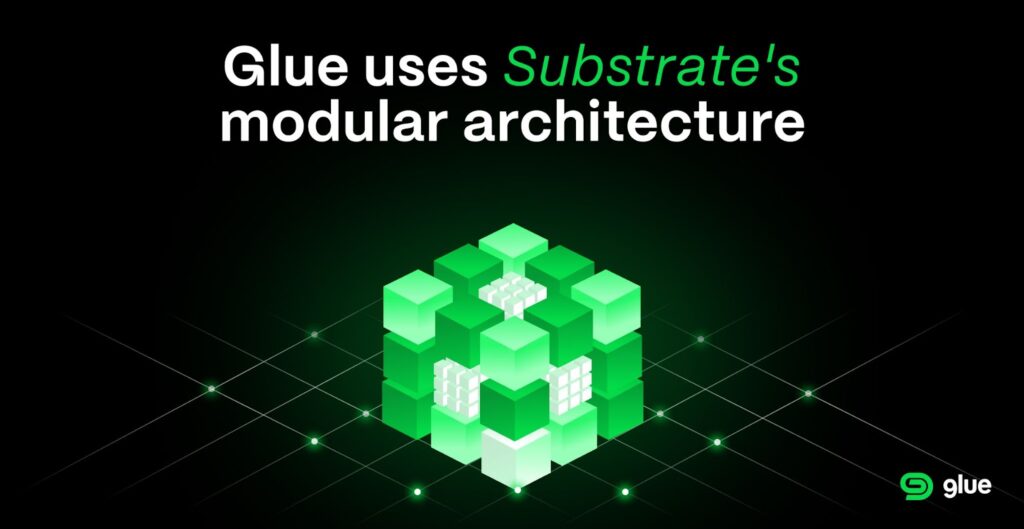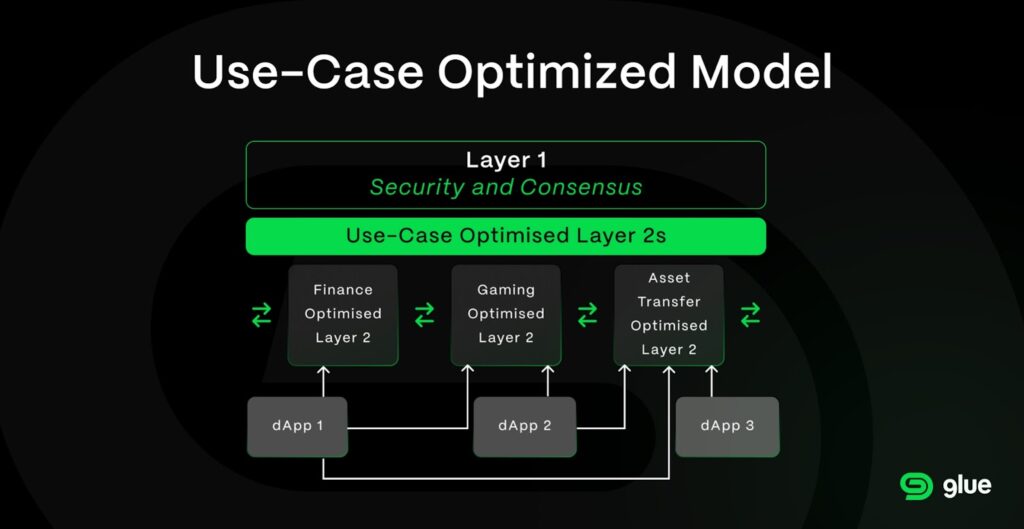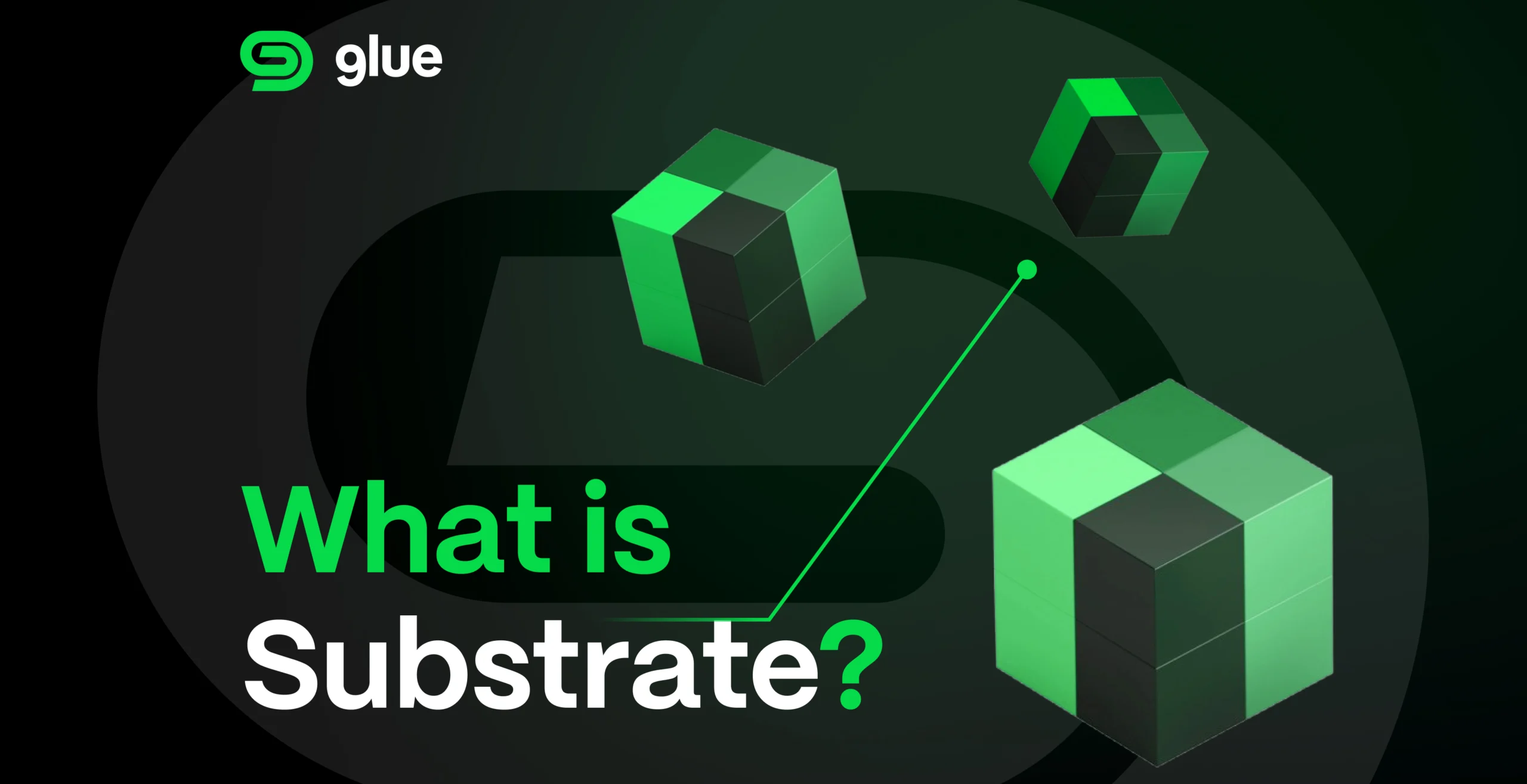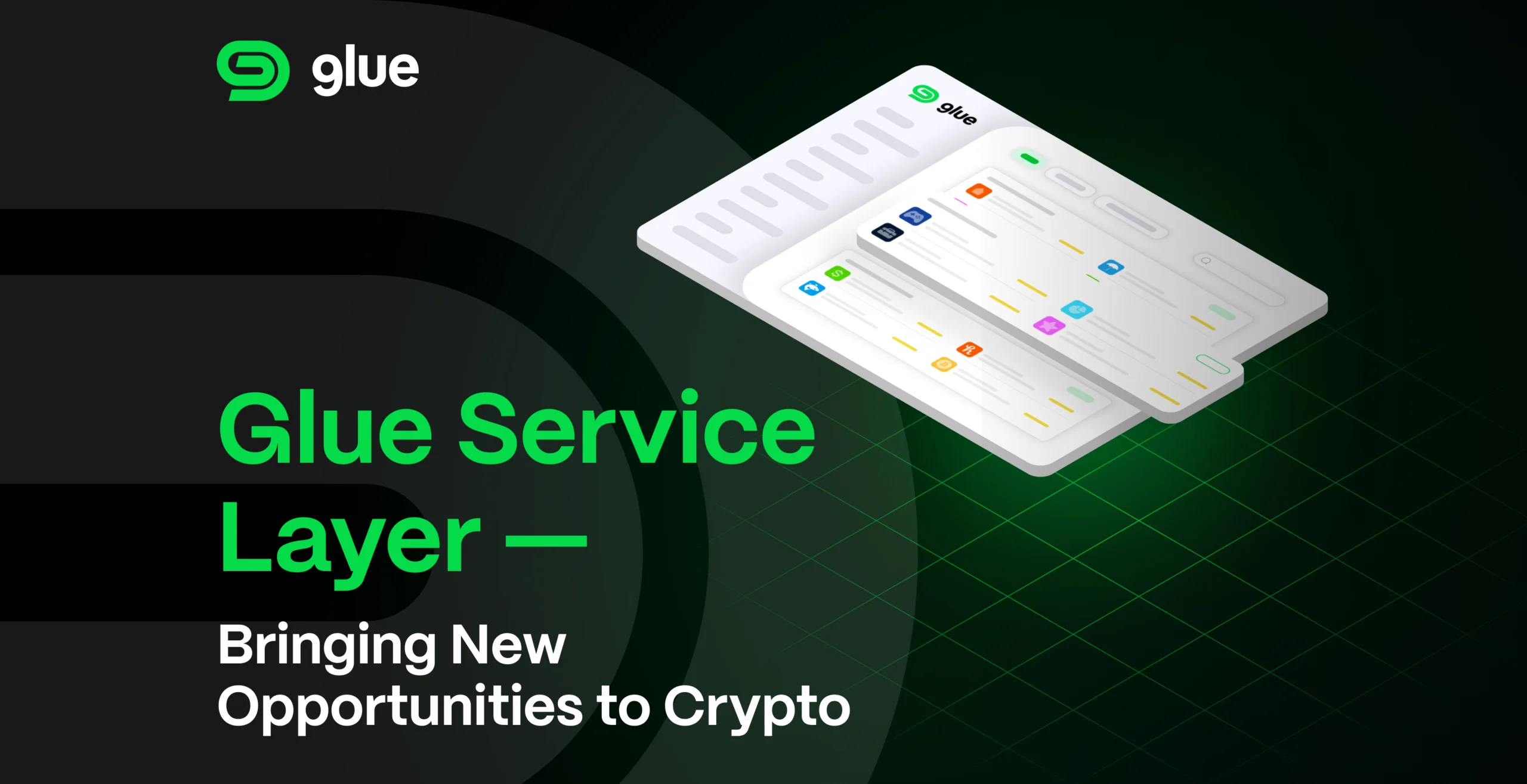What good is a platform if it doesn’t bring in users? According to the site DappRadar, there are currently over 16,500 decentralized applications (dApps), many of which suffer from a range of problems, including bad UX, a lack of interoperability, and security issues. With Glue’s mission to bring users of any level to our decentralized products, we found Substrate to be the perfect framework for our infrastructure.
What is Substrate?
Substrate is a software development kit (SDK) offering a rich set of pre-built components, libraries, and tools. With new developments in the blockchain industry occurring thick and fast, Substrate was built to provide a framework so that developers could build quickly and make modifications with ease.
Who created Substrate?
The Substrate framework was created by Parity Technologies, known for its contributions to the Ethereum ecosystem and crucially, the development of the Polkadot network. Parity’s expertise in blockchain technology, its commitment to open-source development, and its resources and support make Substrate a good choice for building a solid interconnected blockchain ecosystem.
Why did Glue choose Substrate?
Having built blockchain products before, the Glue team was in a good position — we knew exactly what we wanted and how to best achieve it, but also had to factor in speed. We had to consider which framework would allow our developers to make modifications quickly and securely, in what is a very fast-moving development landscape. Building a Substrate blockchain was definitely the best choice for us, as we could leverage the following features:
1. Vast libraries and flexible architecture
Substrate’s blockchain framework provides a comprehensive library of pre-built modules that handle basic functionality like consensus, networking, and storage. This eliminates the need for Glue to reinvent the wheel — our developers can focus on implementing unique features and functionalities that differentiate us from other blockchain platforms. Such as our unique Glue Hub and Service Layer.
Substrate’s modular architecture enables a plug-and-play approach to blockchain development. Developers can easily swap out or modify individual modules to tailor their Substrate blockchain to specific use cases, allowing a high degree of customization and adaptability.

2. Optimized runtime environment for efficient transactions
Substrate’s runtime environment is designed to be highly efficient through the use of WebAssembly (Wasm), a fast and secure binary instruction format. This enables Glue to easily make forkless protocol upgrades, bug fixes and feature enhancements in the service of fast transactions and a responsive user experience, even under heavy load.
This ability to fine-tune runtime parameters further enhances Glue’s performance. Developers can adjust various aspects of a blockchain, such as block times, transaction fees, and consensus mechanisms, to optimize for specific application uses and ensure maximum performance.
3. Security
A focus on security was a major factor in Glue’s decision. The Substrate blockchain framework provides a robust security framework with battle-tested cryptography, secure communication protocols, and extensive testing methodologies. This ensures that the Glue blockchain is protected from common vulnerabilities and attack vectors.
As it stands, Glue can quickly adapt to new security threats and vulnerabilities, as Substrate’s modular architecture allows for security upgrades and enhancements to be implemented independently without disrupting the entire ecosystem.
4. Customizable censorship resistance
Another big advantage of a Substrate blockchain that we see is the ability to decouple security from censorship resistance. Censorship resistance refers to the ability of a blockchain to resist attempts from one or a small number of coordinated actors to block or alter transactions. In many blockchains, security and censorship resistance are tightly intertwined, making it difficult to achieve optimal trade-offs for different use cases.
Substrate, however, allows Glue to customize the level of censorship resistance on each Layer 2 while still maintaining a high level of security through the Layer 1. This flexibility is essential for supporting various applications with different security and censorship resistance requirements.
Read our other blog on Glue’s ecosystem structure for more information on our Layer 1 and Layer 2 blockchains.
Substrate underpinning Glue’s use-case optimized blockchains
To see how Glue differs from other blockchain models, we need to understand the competition:
- Monolithic blockchains – With monolithic blockchains, there is no Layer 2. Here, all functions, including execution, consensus, storage are achieved by the one blockchain — think Solana. The problem with this model is that making changes has effects on the entire blockchain, and as the system scales, there is more chance of error, leading to downtime.
- Generic Layer 2s – projects like Arbitrum and Optimism leverage Layer 2s to improve scalability and speed for a Layer 1 blockchain like Ethereum. Although capable, these L2s don’t differ from each other in terms of the functionality offered, meaning they can’t be modified depending on the type of application they are interacting with.
- App-chain – The app chain model — most notably employed by Cosmos — uses multiple specialized blockchains, each optimized for different applications. While similar to Glue, there is no base Layer 1, meaning that a security weakness in one chain — in communication with the other chains — can lead to the downfall of the entire system.
While above we see problems to do with security, centralization, and flexibility, Glue has utilized Substrate as a future-proof blockchain framework to ensure that these tradeoffs don’t need to be made. Our use-case optimized model sees a Layer 1 for security and consensus, with distinct Layer 2s built on top to serve the varied nature of different decentralized applications launched within the ecosystem.
As seen in the graphic, each application can be built to interact as needed with our finance, gaming, or asset transfer optimized Layer 2s. Through cross-consensus messaging (XCM), all blockchains work in harmony, ensuring maximum application performance. Gone is the one-size-fits-all approach, and instead we have an efficient and scalable solution that incorporates the latest blockchain innovation.

Get what you want from the Glue ecosystem
Glue’s focus on flexibility for developers translates to better products for users, and we’re leading by example with our Glue Hub, a decentralized platform that’s easy for anyone to use. It supports newcomers looking for a simple way to manage their crypto assets through our exchange, as well as seasoned traders who want to interact with detailed trading dashboards and more advanced financial products.
The key difference between Glue and other decentralized platforms is that we take security and usability as seriously as innovation. The mainstream adoption of Web3 will only occur when products are easy to access and offer safeguards against adverse events. Our Substrate blockchain, intuitive interface and service layer work together to achieve this.
Our strategic use of Substrate is a key pillar in democratizing access to blockchain technology. Connect with the Glue community on X and Telegram to stay updated and become a part of our user-friendly digital assets ecosystem.




